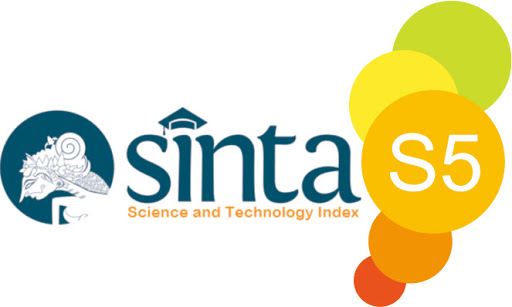Author Guidelines
Prepare Your Manuscript
*every article to be submitted in Maharsi is allowed to be written in either English or Indonesia
General Writing Format
When submitting a manuscript, the author must follow the guidelines below.
- The manuscript should be within the focus and scope of Maharsi Journal.
- The author must make the account in Maharsi Journal
- The manuscript is submitted online by following the step of Online Submission in the Online Journal System
- The manuscript is sent in Ms. Word format with the following conditions:
- A4 paper (21 cm x 29,7cm) with the page margin;
- The number of the manuscript words is between 3000 to 10000 words.
- The script is written in one column with Times New Roman font 12, except for the title of the manuscript (Cambria font 12).
- The conjunctions (and, in, or with, as well, about, that, against, so, because, then, for the sake,) and prepositions (in, to, from, into, within, by, through) are written in lowercase.
- Manuscript are written with the following regulations. For more details follow the templates downloaded here.
Structure of Manuscripts
Structure of manuscripts, the author must follow the guidelines below.
1. Title
The title of the manuscript is written in Cambria, font 17, align left. It contains capital letters in each letter and bold, 1.15 spacing.
- Titles that are mere questions without giving the answer.
- Unambitious titles, for example, starting with "Towards", "A description of", "A characterization of", and "Preliminary study on".
- Vague titles, for example, starting with "Role of...", "Link between...", and "Effect of..." do not specify the role, link, or effect.
- Include terms that are out of place, for example, the taxonomic affiliation apart from the species name.
2. Author(s) Name and Affiliation
The name of the author is written in Cambria, font 13, align left. It contains uppercase in each first letter and bold.
The affiliation of the author is written with Cambria, font 10, align left. It contains the name of the institution/organization/workplace/study place of the author.
Each email of the authors is written in Cambria, font 10, align left.
The Corresponding Author(s) should be marked with superscript. Provide the exact contact email address of the corresponding author(s) in a separate section below the affiliation.
The subheading “abstract” is written with Cambria, font 12, all capital letters and bold, align left. The content of the abstract is written in Cambria, font 12, justify aligned and 1 space.
- Background of study
- Aims and scope of the paper
- Methods
- Results and Discussion
- Conclusions
5. Keywords
The word “Keywords” is written with Cambria, font 12, all capital letters and bold, align left. The content of the “keyword” is written with Cambria, font 12, lower case, and aligned left; you may provide up to 5 keywords; at least 3 are mandatory.
- Begin the Introduction by providing a concise background account of the problem studied.
- State the objective of the investigation. Your research objective is the most important part of the introduction.
- Establish the significance of your work: Why was there a need to conduct the study?
- Introduce the reader to the pertinent literature. Do not give a full history of the topic. Only quote previous work having a direct bearing on the present problem. (State of the art, relevant research to justify the novelty of the manuscript.)
- State the gap analysis or novelty statement.
- Clearly state your hypothesis, the variables investigated, and concisely summarize the methods used.
- Define any abbreviations or specialized/regional terms.
The word “Literature Review” is written with Cambria, font 12, all capital letters and bold, align left. The content of the “Literature Review” is written with Cambria, font 12, 1 space, and justify aligned.
The word “Method” is written with Cambria, font 12, all capital letters and bold, align left. The content of the “method” is written with Cambria, font 12, 1 space, and justify aligned.
- Define the population and the methods of sampling;
- Describe the instrumentation;
- Describe the procedures and if relevant, the time frame;
- Describe the analysis plan;
- Describe any approaches to ensure validity and reliability;
- Describe statistical tests and the comparisons made; ordinary statistical methods should be used without comment; advanced or unusual methods may require a literature citation, and;
- Describe the scope and/or limitations of the methodology you used.
9. Result and Discussion
The purpose of the Results and Discussion is to state your findings and make interpretations and/or opinions, explain the implications of your findings, and make suggestions for future research. Its main function is to answer the questions posed in the introduction, explain how the results support the answers and, how the answers fit in with existing knowledge on the topic. The Discussion is considered the heart of the paper and usually requires several writing attempts.
- State the Major Findings of the Study;
- Explain the Meaning of the Findings and Why the Findings Are Important;
- Support the answers with the results. Explain how your results relate to expectations and to the literature, clearly stating why they are acceptable and how they are consistent or fit in with previously published knowledge on the topic;
- Relate the Findings to Those of Similar Studies;
- Consider Alternative Explanations of the Findings;
- Implications of the study;
- Acknowledge the Study's Limitations, and;
-
Make Suggestions for Further Research.
10. Conclusion
The conclusion is intended to help the reader understand why your research should matter to them after they have finished reading the paper. A conclusion is not merely a summary of the main topics covered or a re-statement of your research problem, but a synthesis of key points. It is important that the conclusion does not leave the questions unanswered.
Tips:
- State your conclusions clearly and concisely. Be brief and stick to the point;
- Explain why your study is important to the reader. You should instil in the reader a sense of relevance;
- Prove to the reader, and the scientific community, that your findings are worthy of note. This means setting your paper in the context of previous work. The implications of your findings should be discussed within a realistic framework, and;
11. Author Contributions Statement
This is a short text to acknowledge the contributions of specific colleagues, institutions, or agencies that aided the efforts of the authors, optional (if needed).
The Author Contributions Statement can be up to several sentences long and should briefly describe the tasks of individual authors. Please list only 2 initials for each author, without full stops, but separated by commas (e.g. JC, JS). In the case of two authors with the same initials, please use their middle initial to differentiate between them (e.g. REW, RSW). The Author Contributions Statement should be included at the end of the manuscript before the References.
12. References
All citations in the text must be in the reference list and vice-versa. The references should only include articles that are published or accepted. Datasets that have been deposited to an online repository should be included in the reference list, including the version and unique identifier when available. For accepted but unpublished works use "in press" instead of page numbers. Unpublished data, submitted manuscripts, or personal communications should be cited within the text only, for the article types that allow such inclusions. Personal communications should be documented by a letter of permission.



